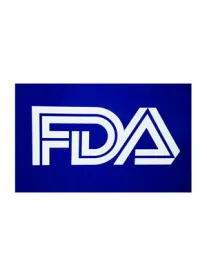On August 2, 2016, the US Food and Drug Administration (FDA) and the Office for Human Research Protections (OHRP) jointly issued draft guidance concerning Institutional Review Board (IRB) written procedures. The guidance provides a comprehensive, flexible checklist and is intended to supersede and clarify the FDA’s 1998 “Appendix H: A Self-Evaluation Checklist for IRBs” and the OHRP’s 2011 “Guidance on IRB Procedures."
The Draft Guidance provides a comprehensive, flexible framework (referred to as a “checklist”) “to prompt a thorough evaluation of procedures essential for ensuring the protection of human research subjects.” Notably, the checklist is organized by regulatory requirements with cross-references to relevant regulations. Regulatory requirements include conducting initial and continuing reviews of research, reporting IRB findings and actions, determining which research projects require review more often than annually, ensuring prompt reporting to the IRB of proposed changes to research, requiring that changes in approved research may not be initiated without IRB review and approval except when necessary, and ensuring prompt reporting of unanticipated problems involving risks to human subjects or others and any instance of serious or continuing noncompliance. While these activities are mandated and operate as headings in the checklist, there may not be an explicit regulatory requirement for a related written procedure. In these instances, FDA and OHRP recommend that IRBs still address the activities and examples provided in the Draft Guidance in written procedures.
IRBs and institutions that review and oversee human subjects research under US Department for Health and Human Services regulations (45 CFR Part 46 and 21 CFR Parts 50 and 56) are responsible for the preparation and maintenance of written procedures. FDA and OHRP may evaluate an IRB’s written procedures to analyze operational compliance with regulations and statutory requirements. Traditionally, IRBs, subject to both agencies’ regulations and guidance documents, must comply with the requirements for written procedures as set forth by each individual agency.
The Draft Guidance provides the following recommendations:
-
Written procedures should be “sufficiently detailed” to inform IRB members and staff how to perform particular activities. The amount and nature of detail will vary across IRBs. The Draft Guidance recommends inclusion of step-by-step operational details rather than a reiteration of applicable law.
-
Written procedures should identify the position title responsible for performing specific activities as opposed to including an individual’s name.
-
Written procedures should be made available to investigators to increase awareness of the IRB’s requirements and processes.
-
Written procedures should be reviewed on a regular basis and updated as necessary to describe current processes.
-
Written procedures reflected in the checklist may not be affirmatively required by the regulations, but are appropriate.
-
Written procedures for certain functions may be appropriate to consider (e.g., administrative support staff duties). The checklist is not exhaustive. It may be necessary to add a written procedure based on a unique research activity (e.g., written procedures related to the interaction between IRB members and a Radioactive Drug Research Committee). Similarly, not all topics listed within the checklist may be applicable to every IRB (e.g., research involving children as subjects).
-
Other agency guidance documents should similarly be consulted in the drafting and maintenance of IRB written procedures.
The Draft Guidance indicates that there is a positive correlation between the existence and consistent use of clear written procedures and effective protection of the rights and welfare of human subjects. Although use of the checklist is not required, it is general enough for application within IRBs that conduct different types of research studies and that are required to abide by distinct administrative practices, institutional polices, and local and state laws and regulations.
Overall, the checklist is a useful compliance tool for IRB administrators, IRB chairpersons and institutional chairpersons to assess and evaluate an IRB’s current written procedures, while waiting for the issuance of finalized guidance. Interested parties have until October 1, 2016, to submit comments and suggestions.




 />i
/>i

